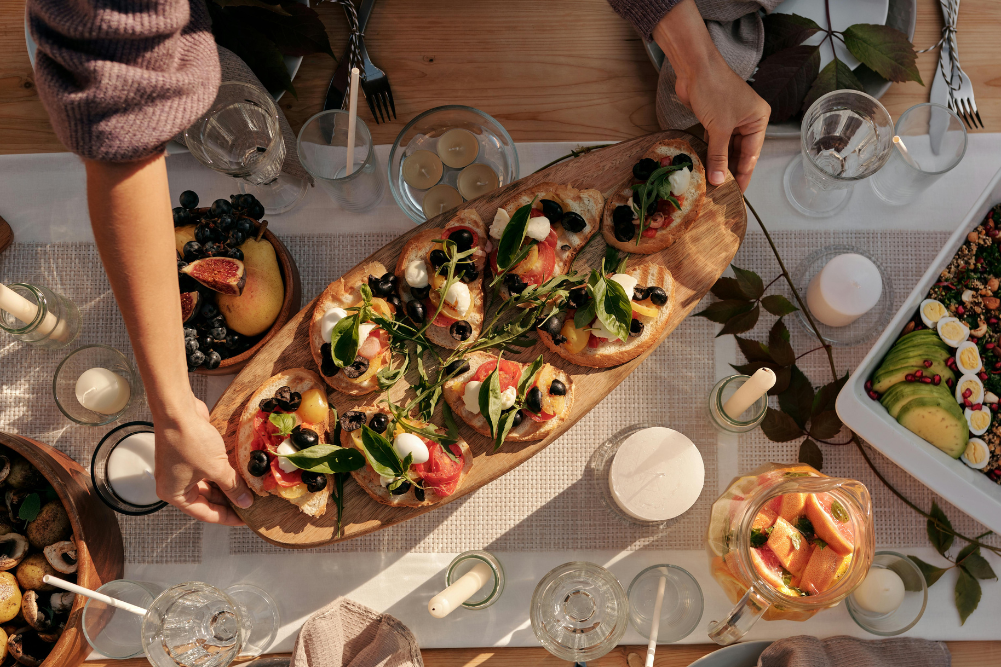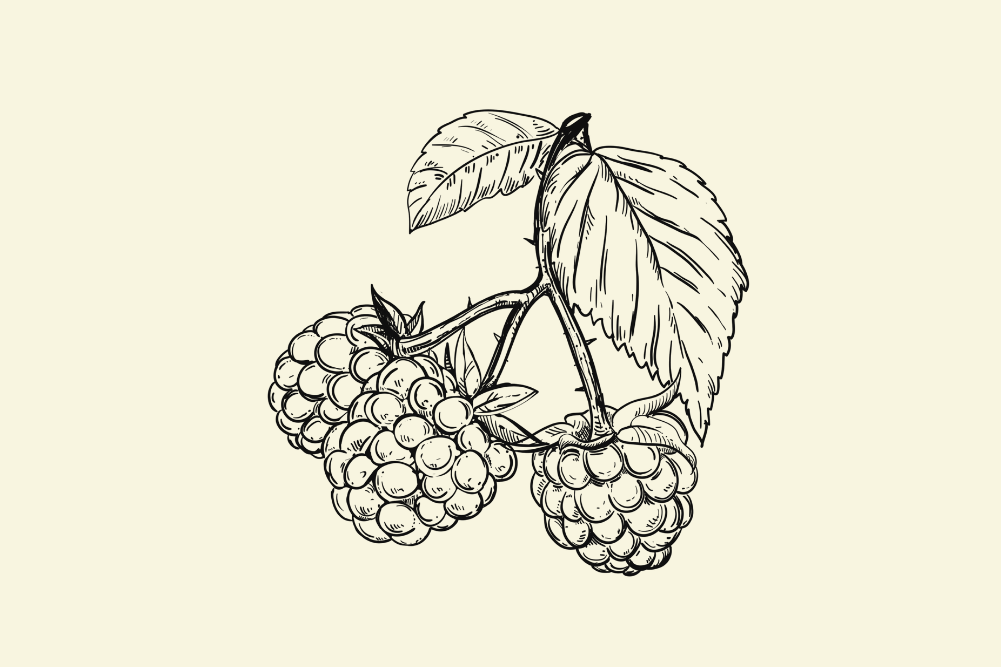The slow food movement
We buy our grapes without seeds, our vegies pre-chopped and our dinners ready-made. We eat breakfast while we drive, lunch at our desks and have dinner with the television. We choose packaged, processed and pre-cooked over wholesome, homemade and healthy, and yet, in spite of all our efforts to make food quick, convenient and fuss-free, we’re somehow busier, more stressed and, yes, more overweight than ever.
Unless you’ve been hiding under a rock these past few years, you would be familiar with the ever-increasing obsession with speed; but, more to the point, you have probably also been wondering why we are in such a hurry to rush to the ends of our lives.
Speeding past pleasure
This is a paradox the 10,000-strong worldwide Slow Food movement calls the “fast food lifestyle”. It’s what happens when you are so caught up in the pursuit of pleasure that you end up hurrying straight past it. It’s why you experience road rage on the way to yoga, race through your “holiday checklist” and eat most meals on the run.
In 1989, it was also a mindset Carlo Petrini believed was fast encroaching on traditional Italian life; something he saw encapsulated in the establishment of the first McDonald’s store in Italy (at the bottom of the historic Spanish Steps, no less!). For Petrini, a journalist, this was the catalyst for establishing the Slow Food movement, which he did with one overriding aim in mind: to fight against “fast food and fast life”.
His argument for such an aim can be surmised by his observations that we are eroding away our happiness, our health and the health of the planet by choosing processed, factory-line quasi-foods over cooking for ourselves, by purchasing corporate products made on the other side of the world instead of from local artisans, by replacing local tastes and flavours with globally homogenised tastes, and by trading the tradition of shared meals for the solitariness of drive-thru.
That’s not to say Slow Food is the sort of angry traditionalist faction you’ll find vandalising global restaurant franchises. Petrini’s vision has always been based on the recognisably Italian idea that appreciating the taste and quality of carefully produced food and wine, and sharing these pleasures with others, is what makes life worth living. More than any other reason, Slow Food exists to prevent such pleasures from disappearing.
Defining ‘slow’
It’s a compelling notion and it’s why, despite numerous areas in which slow food can be held up for comparison against its fast counterparts, the most immediately conspicuous and widely discussed is the arena of wellbeing. Fast food and its correlation with declining health is widely documented in the popular culture agenda with films such as Supersize Me and Fast Food Nation as much as in the scientific world.
It is indisputable that regular consumption of high-fat, high-sugar, high-salt meals like those served in fast-food restaurants will be at the cost of your wellbeing. But slow food doesn’t restrict the definition of “fast” food to those made in the chains.
Any area in which food has been treated without thought, care or consideration, including farming or growing techniques, shopping, cooking and eating, is “fast food” and is detrimental to your wellbeing. This extends to “fast” produce: that which is grown conventionally using pesticides, artificial fertilisers and genetic modification, and which has been cited as causing everything from bioorganic chemical build-up in our bodies to asthma and cancer.
“Compare that to locally grown, seasonal, organic, produce,” says Alison Drover, co-director of Slow Food Sydney, “which is made naturally, in tune with the earth’s seasons. It’s not only going to be richer in nutrients and therefore better for you, but it’s going to be more pleasurable to eat!”
Nutritionist, dietitian and director of Food & Nutrition Australia Sharon Natoli agrees, pointing out that locally grown produce is less likely to have suffered from nutrient depletion by the time it reaches your plate. Similarly, she adds, “fast” eating habits, such as eating quickly under stress, lead to poor digestion.
Her comments are further substantiated by the latest neuro-scientific research, which suggests what most of us already suspect: that the human brain is not very good at multitasking. Combining eating with another activity, the British Journal of Nutrition reports, makes you more likely to under- or over-eat, leading to excess calorie consumption either at that point or later on when hunger strikes again.
It’s an unfortunate finding for those of us who habitually condense lunch into a five-minute time slot between meetings, but it illuminates an aspect of the fast lifestyle so often associated with poor nutrition: stress.
The stress connection
As both scientific studies and popular experience observe, we are far more likely to reach for foods of poor nutritional quality and convenience when under duress, but what’s been less clear until now, however, is whether those food choices could themselves contribute to higher levels of stress.
It’s a question researchers at the University of Calgary have now answered by asking healthy adults to eat a high-fat, high-calorie McDonald’s breakfast before having both their mental and physical stress responses tested. Perhaps unsurprisingly, the conclusions they drew from their results were definitive: just one fast-food meal actually makes you more susceptible to mental and physical stress.
This is exactly why “fast” food is not as convenient as the marketers would have us believe, says Drover. “It simply allows you to continue along the same destructive cycle.” Contrarily, she insists that Slow Food can be fast; in fact, faster than drive-thru. “Slow Food doesn’t have to mean slow cooking!” She cites a recent meal she made: tomatoes on bread, sprinkled with salt. “When you buy Slow produce, the quality is better, so you actually enjoy eating things in a rawer state,” she explains. “Most of us have forgotten what real taste is. Some really beautiful tomatoes with some salt can be an absolute pleasure.”
That means you don’t have to smother anything in complicated sauces or follow complex recipes. She adds, “Slow food is about simplifying things. Less is more.”
Deeper engagement
Carl Honore in his recently published book, In Praise of Slowness: Challenging the Cult of Speed, challenges the westernised view that “slow” is a four-letter word by arguing that doing things as well as possible, instead of as fast as possible, will result in a deeper engagement with the world around you, and a more meaningful, mindful life. Sitting down for a proper lunch instead of eating at your desk, for example, might seem “slower” but it’s likely to result in a stronger connection with the present, giving you a properly restful break from work and guaranteeing higher productivity levels once you return to the office.
Similarly, turning off the TV and turning to each other at the dinner table involves stimulation from fewer sources, but more engagement with the present — which studies have shown result in not only higher-quality nutritional intake by the entire family and fewer weight problems, but also the development of family traditions, better communication skills and a positive effect on the character and social development of the children.
As Honore puts it, we should be “savouring the hours and minutes rather than just counting them”. The Slow philosophy is not about doing everything at a snail’s pace. “It’s about seeking to do everything at the right speed.”
Drover agrees. “It’s not about putting your life in slow motion. It is simply that too many people have forgotten how to leave room for the joy of serendipity in their lives,” she says, adding, “Instead of organising our weekends like our working week — with brunch at 10, a shopping meeting at 12, we should be leaving something to chance.”
One of the best things about about Slow Food is it’s not difficult to incorporate some of the principles into your life. As Dover says, “It’s simply about living in the present, which goes without saying will make you happier.” As for food, she says, “Most of us gulp it down without taking a moment to cherish the pleasure of taste. When you stop for a minute and do that, when you cook things yourself, when you’re mindful around food, you actually nourish yourself in a whole new way.”
Wider effects
Slow Food extends further than the foods we choose to eat to the sources we choose to buy from. As Slow Food International points out in their mission statement, our interest in the food we eat, where it comes from, how it tastes and how our food choices affect the rest of the world is dwindling, and the ignorance associated with this apathy means many of us remain profoundly uninformed about the inhumane working conditions, unfair trade agreements and rapidly disappearing biodiversity occurring across our planet.
Their solution, however, “The Ark of Taste” doesn’t involve the downfall of globalisation. Prompted by Petrini’s realisation that the disappearance of products and knowledge from the world has parallels with the story of The Flood, the Ark initiative involves identifying products, plant varieties and animal breeds that are in danger of disappearing and then preventing this from happening using any means necessary. In the past, this has involved everything from helping a product’s manufacturer with marketing to actually taking over production.
It is a tactic that has helped ensure the survival of more than 200 threatened Italian products, as well as another 60 worldwide, including a yak’s milk cheese from Tibet and guarana, an energy-giving root from Brazil, and successfully helped prevent the multinational corporation Monsanto taking out a patent on the genetic code for basmati rice.
Slow Food also advocates easier solutions to preserving the unique flavours of your local area — like becoming a “locavore”. This is a separate movement, but one that’s arisen in tempo with Slow; just as likely to be adopted by environmentalists and hedonists as it is a part of the Slow philosophy. Devoted advocates only buy produce grown within a specific radius of their home.
Even if that’s not possible (as is often the case in a country like Australia), buying from local merchants, cultivating your own vegie patch and shopping at your nearest Farmers’ Market (“slow shopping”) are all ways to ensure continued survival of unique taste, at the same time cutting down on food miles, cultivating a sense of local community and supporting the regional economy.
Social benefits
The benefits of this approach reach beyond environmental. A 2006 study conducted by the New Economics Foundation found that the markets favoured by Slow devotees not only offer better choice in fresh fruit and vegetables than supermarkets at half the price, but generate substantial benefits for the local economy, creating twice as many jobs per square metre of retail than supermarkets.
A similar study undertaken in Michigan, USA, found that buying local food would boost the state economy by almost 2000 new jobs, while a third study conducted by Tim Lang, Professor of Food Policy and City University, found if all food were sourced from within 20km of where it was consumed, environmental and congestion costs would fall from more than £2.3bn [AUS$5.1bn] to under £230m [AUS$515m].
Still, Lang notes that the savings associated with local food are at least as environmentally and socially beneficial as they are economic, which Drover points out is appropriate for the Slow philosophy. “Regardless of why you’re going Slow, whether it’s to stress less or because you’re concerned about the environment, the positivity generated by your choices will flow through to all areas of your life.”
With such incredible benefits, there’s never been a better time to stop and savour. Buying the best local produce you can afford, preparing your meals with love and sharing them with people you care about not only sees you contributing directly to the environment and economy around you, but leaves you less stressed, brimming with positivity and a whole lot healthier, inside and out. The icing on the cake is that choosing Slow will actually make you faster and more productive every day.
- Brunstrom J.M., Mitchell G.L.,
‘Effects of Distraction on the Development of Satiety,’
British Journal of Nutrition, Volume 96, Issue 4, 761-9, Oct 2006 - University of Calgary Press Release: A Single, High-Fat Meal Plus Stress Equals Physical Harm
- Patty Cantrell and Michael Hamm, Great Lakes Bulletin News Service
- Pretty JN, Ball AS, Lang T, Morison JIL, (2005) ‘Farm Costs and Food Miles: An Assessment of the Full Cost of the UK Weekly Food Basket’, Food Policy, 30, 1, 1-20
Further references available on request.







